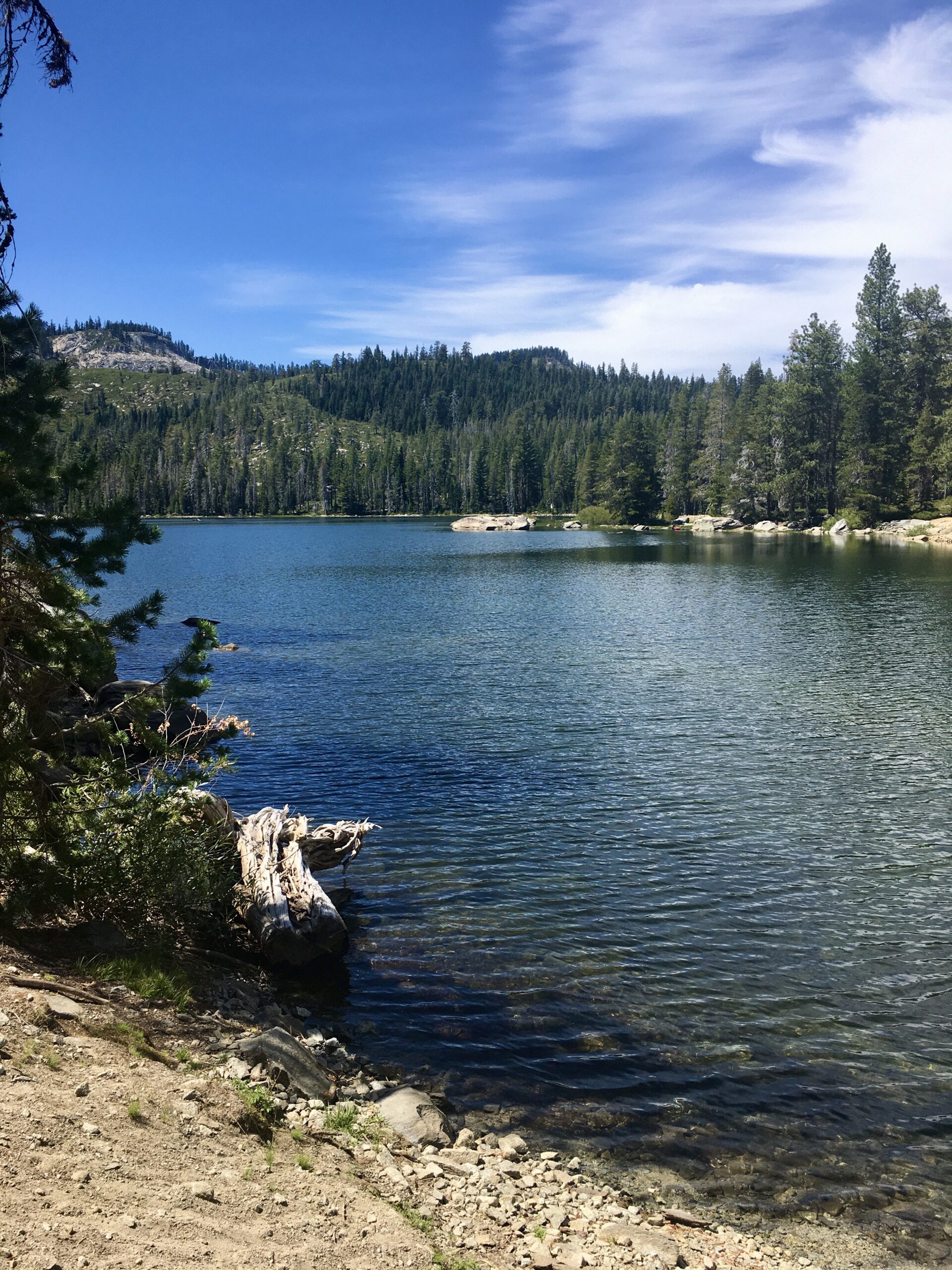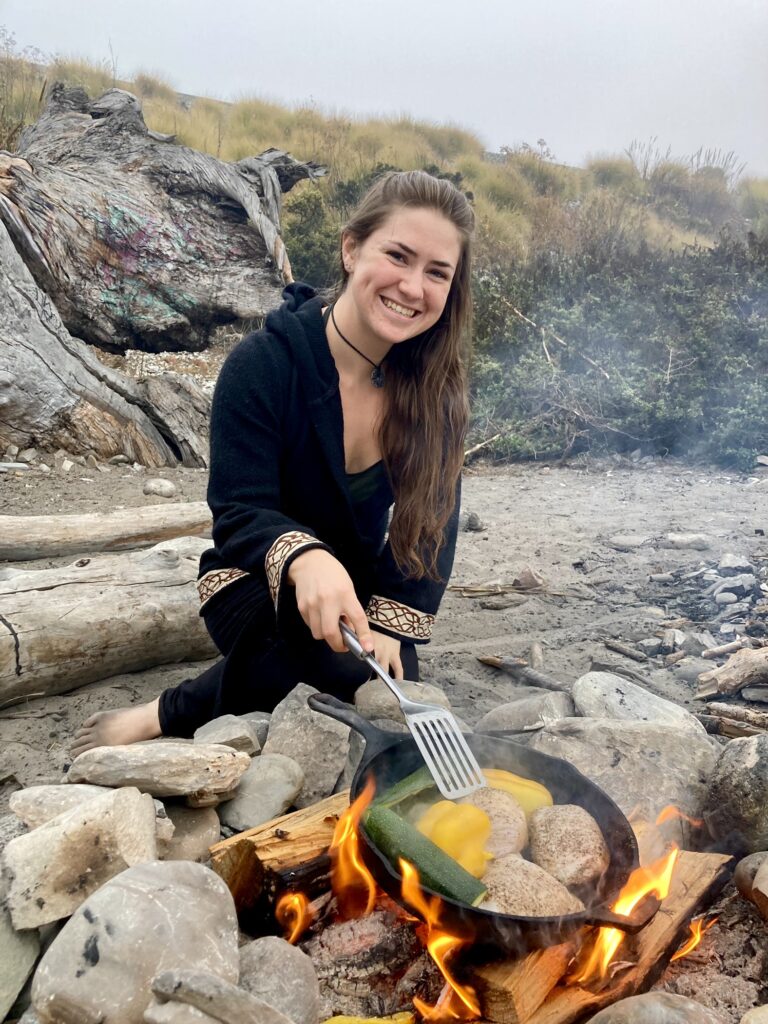Overcome Your Gut + Digestive Issues With Ancestral Nutrition
How To Balance The Effects Of Summer

As the days grow longer and warmer, the wheel of the year turns to Litha (the solstice) and summer is upon us. It’s a time of warmth, sun, light, happiness, and adventure!
More people and animals alike are drawn out. Mountains and lands that were covered by snow in the winter, are now easily accessible! Food is plentiful, especially juicy ripe fruits!
It’s a time to enjoy campfires; feasts; BBQs; trips; going to the beach, river, or lake to cool off in the water; and laying in the sun.
As summer progresses we see an increase of the qualities of summer (heat, light, intensity, fieriness, and dryness) in ourselves.
If these qualities become too dominant they can lead to imbalances/symptoms such as red skin, inflammation, acid reflux, irritability, loose stools, pimples, rashes, swelling/puffiness, and/or headaches.
While this is pretty typical of summer, it should be noted that the qualities of the seasons vary based on where you live so make adjustments to these recommendations as it’s relevant to you and your environment.
It should also be noted that not all of us are affected equally by the same seasons. Ever wonder why some people can’t wait for the summer heat, while others dread it? It’s because it has to do with what imbalances we are prone to and currently dealing with, and in Ayurveda this is linked with your dosha (if you are the pitta dosha you will likely feel the effects of summer more).
So What Are Some Things You Can Do To Restore/Maintain Balance?
The main overarching goal here is to balance the qualities of summer by bringing more of the opposite qualities into our daily lives. Those qualities are: cool, calm, movement, moisture, and light. We can do this by doing the following things:
1) Be More Active
Summer is a great time to increase your activity and/or the intensity of your training! If you’ve been wanting to up your training now’s the time! The warmth of summer helps to keep your body warm and prevent injury and unlike the winter which is a time to slow down and rest, summer is the season for picking up the pace and staying active!
One thing to remember though is that it’s easy to overheat training in the summer time. This could lead you to getting light headed, nauseous, dehydrated, or exhausted. So if you live in a hot place and train outside, the morning or evening is generally the best time to train.
2) Rise Earlier
Your body syncs with the cycles and rhythms of nature. For instance, in the absence of artificial lights, you’ll typically get tired not too long after sunset and will naturally rise around the time the sun rises. Since the sun rises earlier in the summer and there’s more day light, we actually thrive waking up earlier and require less sleep during the summer time compared to winter.
3) Get Outside And Explore!
One of my absolute favorite parts of summer is that the snow melts in the mountains (my favorite place ever) and tons of lakes, rivers, waterfalls, and beautiful areas become easy to explore!
While the cold and snow of winter draws us into our warm homes, the warmth of summer draws us out into the wild! I think this is very instinctual because our ancestors had to take advantage of this time to gather food and resources for the winter.
4) Avoid Sun Burns
While time in the sun is amazing for your health, sunburns are not!
Heat causes fat to oxidative so essentially sunburns mean the sun is oxidizing your fat (creating unstable free radicals just like what’s in vegetable oils)! Burns also increases heat and inflammation in the body. Not to mention they hurt!
Sunscreen is probably the most common way to prevent burns, but the vast majority of them are very toxic to the body! They also prevent you for getting all the benefits of the sun (like vitamin D synthesis).
So what is one to do when the summer roles around and your chances of burning increase?
1) Don’t Consume Seed Oils- Seed oils are very chemically unstable and prone to oxidation and if you consume them that’s what your fat is gonna be made up of. This will greatly increase your chance of being burned because your fat will be extra susceptible to oxidation!
2) Instead Eat Saturated Fat + Vitamin A- As you probably already know saturated fat is much more stable and less prone to oxidation. Therefore if your fat is made up of saturated fat (from your diet) then you’ll be a lot less likely to burn! Also be sure to get plenty of vitamin A from foods like liver, kidney, cod liver oil, sea urchin, salmon roe, tuna, butter, eggs, eel, mackerel, and cheese. Vitamin A is protective against sunburns!
3) Gradually Increase Sun Exposure- It’s best if you can spend several hours outside every day through out the year. This way your tan will gradually increase as summer draws near and you likely won’t get burned at all. However, I know a lot of people find it difficult to make that a priority so if that’s the case, just increase your exposure gradually. At the beginning of summer you probably only want to lay out in the sun for about 45 mins midday, not 2+ hours. Gradually increase this and in a month or 2 you’ll have a tan that makes it easy to lay out in the sun for 2 hrs without getting burned
4) Cover Up + Go In The Shade- To piggy back off the last tip, if you’ve been in the sun for close to your max amount of time before burning, then cover up or go in the shade.
5) Avoid Wearing Sunglasses- Our bodies are smart and the sun hitting our eyes is a way to let our body know that we’re being exposed to the sun and to prep accordingly to prevent burns. However when we cover our eyes with sunglasses this inhibits that communication with our body and can actually increase your chances of burning. So try to only used your sunglasses when you really need them like when reading a book in the sun, otherwise try to go sunglassless more often!
6) Factor In Elevation, Time, Clouds, And Water- Certain things increase the amount of sun you’re getting like being in higher elevation, being out midday, or being in the water. Also being in the water or out on an overcast day can make it difficult to feel the burn coming on, compared to laying out in the sun dry on a hot day. Remember these to try to get a better idea of how much sun exposure you’re actually getting.
7) Use Natural Non-Toxic Sun Screen As A Last Resort- If you are going to be in a situation where you aren’t tan enough to deal with the sun exposure you’ll be getting and there’s no option for going in the shade, covering up, etc. Then get a good quality non-toxic sunscreen to use. In these situations, I think it’s a lot better than getting burned. (If you know of any good non-toxic brands, please share in the comments, idk of any and I’m sure other people would appreciate it!)
Also if you do get burned, it happens no one’s perfect, aloe gel is very soothing and healing to put on burns!
5) Stay Hydrated
In the summer we often sweat a lot, which is awesome for lymphatic and skin detox! But we need to remember to replenish the water and electrolytes we lose through sweat. Some great hydrating beverages are:
- filtered water with a pinch of good quality mineral salt
- apple cider vinegar in water with salt, cinnamon, and ginger (recipe here)
- sparkling limeade (recipe here)
- coconut water
- juice
- bone broth (recipe here)
- whole raw milk
6) Jump In Cool Water + Take Cold Showers
This brings a very refreshing and revitalizing coolness to contrast the intense summer heat.
7) Eat A Lighter Seasonal Diet
Summer is a great time to enjoy lighter foods as well as sweet, juicy, refreshing foods like peaches, tomatoes, and a variety of fresh fruit.
Our digestion (or agni) often weakens in the summer time and it’s common to not be as hungry in the summer. Therefore lighter foods like grilled steak with salad can be quite nice this time of year. Also if you’re looking to lose some weight, now’s a great time. Since your appetite is naturally lower, it makes it a lot easier.
In summer, it’s best to prioritize the flavors sweet, bitter, and astringent as they help to balance the heat of summer.
Below are some common examples of summer foods and if you want to check out some of my favorite summer recipes click here!
Also note that these food lists are based on what’s seasonal in California where I live. However, what’s in season where you live may look a little different. It’s best to go by what’s in season for you because that will best balance your body in relation to your climate. Remember the seasons look a little different everywhere as well.


Ideal Summer Foods:
Animal Products:
| All Muscle Meats | Cheese | Whole Milk |
| Animal Fats (Great For Cooking With) | Eggs | Organ Meats and Odd Parts |
| Bone Broth | Fish | Shellfish |
| Bone Marrow | Ghee | Yogurt |
| Butter | Kefir |
Fruits:
| Apples | Figs | Nectarines |
| Apricots | Grapes | Peaches |
| Blackberries | Grapefruit | Plums |
| Blueberries | Guava | Raspberries |
| Cantaloupe | Mango | Strawberries |
| Cherries | Melon | Watermelon |
Vegetables:
| Avocados | Garlic | Peppers |
| Carrots | Green Beans | Potatoes |
| Corn | Green Onion | Spinach |
| Cucumber | Lemongrass | Tomatillos |
| Eggplant | Okra | Tomatoes |
| Fennel | Onion | Zucchini And Other Summer Squashes |
Herbs And Spices:
| Basil | Mint | Sage |
| Chives | Oregano | Tarragon |
| Cilantro | Parsley | Thyme |
| Dill | Rosemary |
Other Foods:
| Coconut | Oats (soaked before) | Raw Honey |
| Maple Syrup | Olive Oil | Rice (soaked before) |
Works Cited
1. “Summer Guide Maximize Your Summer Health.” Banyan Botanicals. Accessed 16 June 2022. https://www.banyanbotanicals.com/info/ayurvedic-living/living-ayurveda/seasonal-guides/summer-guide/
2. O’Donnell, Kate. “The Everyday Ayurveda Cookbook.” Colorado: Shambhala Publishing. 2015. Print
3. Seasonal Food Guide. Accessed 16 June 2022. https://www.seasonalfoodguide.org/

